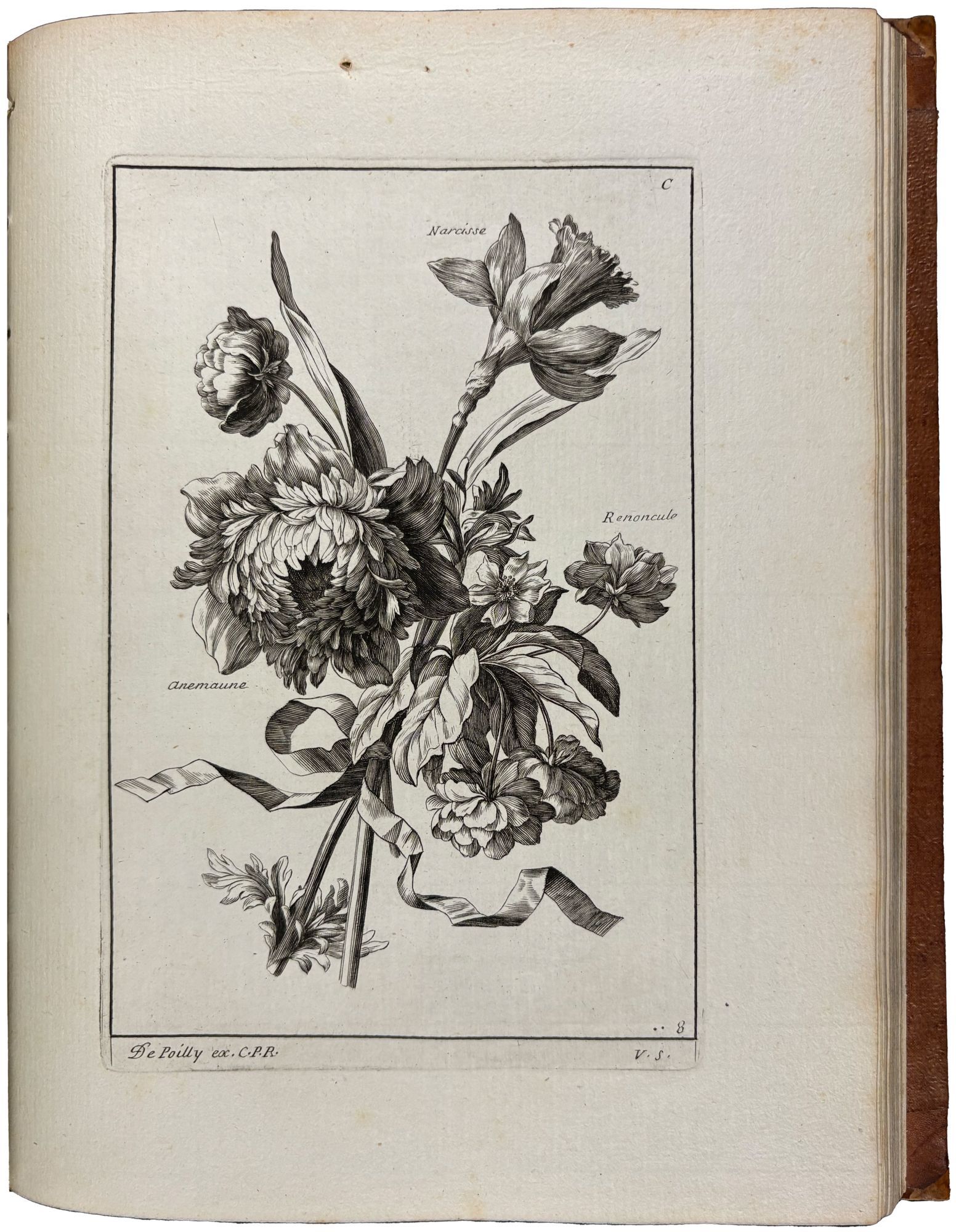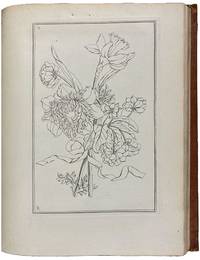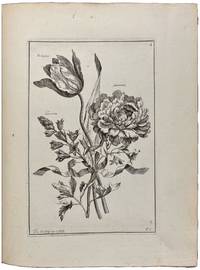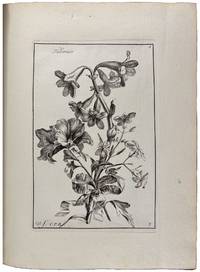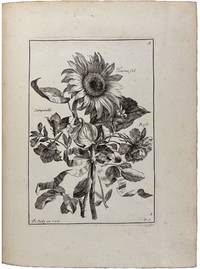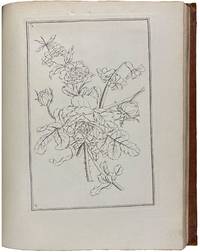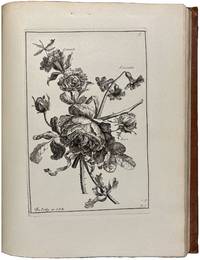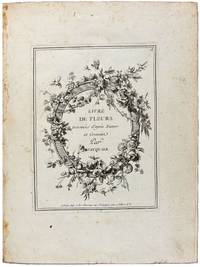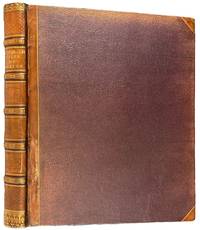Livre de fleurs, dessinées d’après nature, et gravées par Vauquer
- SIGNED 4to
- Paris: J. Fr. Chéreau, 1768
Paris: J. Fr. Chéreau, 1768. 4to. (10 3/8 x 8 inches). 53 engraved plates, of which 47 are accompanied by corresponding outline plates. Nineteenth-century calf-backed cloth boards, rebacked retaining original spine with five raised bands, lettered gilt
A rare eighteenth-century publication of Vauquier’s flower drawings engraved after nature, not recorded in the standard literature or found in major institutions.
This suite of floral studies, originally engraved from nature by the seventeenth-century ornament specialist Jacques Vauquier (also known as Vauquer), appears here in an 18th-century publication by the firm of Jacques-François Chéreau (1742-1794). The work pairs outline plates with their corresponding finished renderings, which suggests a didactic use, guiding a viewer from contour toward modelling, and distinguishes it from the grand, single-state florilegia. The title-plate bears the imprint "chez J. Fr. Chéreau, rue Saint-Jacques..." identifying the later eighteenth-century successor to a celebrated line of Paris print sellers. Records at the Bibliothèque Nationale de France show that Jacques-François Chéreau was active by 1768, formally taking over the family business in 1776, and then selling the business to François-Étienne Joubert in 1787. These dates establish a printing window of circa 1768-1787 for this work, after Vauquier's lifetime and distinct from late-seventeenth-century impressions sometimes attributed directly to him. Vauquier is best known today through the de Poilly publications after Jean-Baptiste Monnoyer (notably Livre de toutes sortes de fleurs d'après nature), issued chiefly as finished folio plates without outlines. Those suites differ entirely in publisher, format, and purpose. By contrast, the present Livre de fleurs appears to belong to the pedagogical culture of the eighteenth century, where students traced, shaded, and coloured outline plates against finished models to internalize floral forms for ornamental design.
A rare eighteenth-century publication of Vauquier’s flower drawings engraved after nature, not recorded in the standard literature or found in major institutions.
This suite of floral studies, originally engraved from nature by the seventeenth-century ornament specialist Jacques Vauquier (also known as Vauquer), appears here in an 18th-century publication by the firm of Jacques-François Chéreau (1742-1794). The work pairs outline plates with their corresponding finished renderings, which suggests a didactic use, guiding a viewer from contour toward modelling, and distinguishes it from the grand, single-state florilegia. The title-plate bears the imprint "chez J. Fr. Chéreau, rue Saint-Jacques..." identifying the later eighteenth-century successor to a celebrated line of Paris print sellers. Records at the Bibliothèque Nationale de France show that Jacques-François Chéreau was active by 1768, formally taking over the family business in 1776, and then selling the business to François-Étienne Joubert in 1787. These dates establish a printing window of circa 1768-1787 for this work, after Vauquier's lifetime and distinct from late-seventeenth-century impressions sometimes attributed directly to him. Vauquier is best known today through the de Poilly publications after Jean-Baptiste Monnoyer (notably Livre de toutes sortes de fleurs d'après nature), issued chiefly as finished folio plates without outlines. Those suites differ entirely in publisher, format, and purpose. By contrast, the present Livre de fleurs appears to belong to the pedagogical culture of the eighteenth century, where students traced, shaded, and coloured outline plates against finished models to internalize floral forms for ornamental design.


